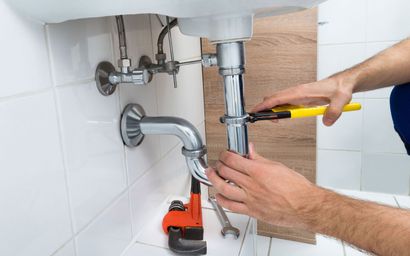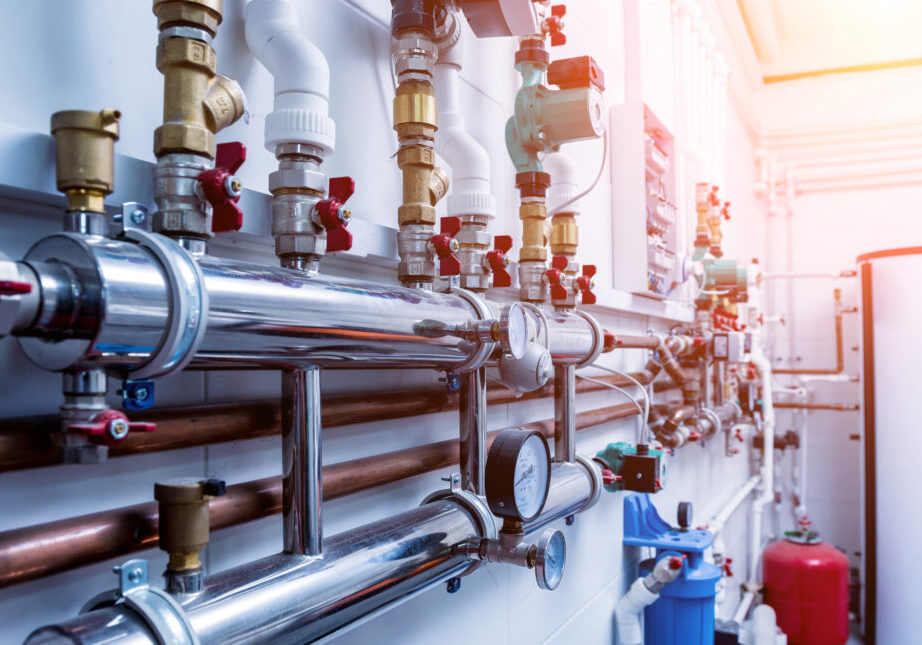The Basics of Your House's Plumbing System Anatomy
The Basics of Your House's Plumbing System Anatomy
Blog Article
They are making several great pointers on Exploring Your Homes Plumbing Anatomy in general in this great article further down.

Comprehending just how your home's plumbing system functions is crucial for every single home owner. From delivering tidy water for alcohol consumption, food preparation, and bathing to securely eliminating wastewater, a well-maintained plumbing system is essential for your family's health and wellness and convenience. In this detailed overview, we'll discover the complex network that composes your home's plumbing and offer ideas on maintenance, upgrades, and handling common issues.
Introduction
Your home's pipes system is greater than simply a network of pipelines; it's a complex system that guarantees you have accessibility to tidy water and effective wastewater removal. Understanding its components and exactly how they work together can help you stop costly repairs and guarantee whatever runs efficiently.
Fundamental Components of a Pipes System
Pipes and Tubes
At the heart of your plumbing system are the pipes and tubes that carry water throughout your home. These can be constructed from various products such as copper, PVC, or PEX, each with its benefits in terms of resilience and cost-effectiveness.
Fixtures: Sinks, Toilets, Showers, and so on.
Components like sinks, bathrooms, showers, and bathtubs are where water is used in your house. Recognizing how these components link to the pipes system aids in identifying issues and preparing upgrades.
Valves and Shut-off Points
Valves control the flow of water in your pipes system. Shut-off shutoffs are critical throughout emergencies or when you need to make repairs, allowing you to separate parts of the system without interfering with water circulation to the whole house.
Supply Of Water System
Main Water Line
The main water line connects your home to the community water system or an exclusive well. It's where water enters your home and is distributed to different components.
Water Meter and Stress Regulatory Authority
The water meter actions your water use, while a stress regulatory authority ensures that water flows at a safe stress throughout your home's pipes system, avoiding damage to pipes and components.
Cold Water vs. Hot Water Lines
Understanding the distinction between cold water lines, which supply water straight from the major, and warm water lines, which carry heated water from the water heater, aids in repairing and preparing for upgrades.
Drain System
Drain Pipeline and Traps
Drain pipes lug wastewater far from sinks, showers, and bathrooms to the drain or sewage-disposal tank. Traps prevent sewer gases from entering your home and additionally catch particles that might cause clogs.
Ventilation Pipes
Ventilation pipes permit air right into the water drainage system, preventing suction that could slow drainage and cause traps to empty. Proper ventilation is vital for preserving the stability of your pipes system.
Value of Proper Drainage
Ensuring proper drainage prevents backups and water damages. Regularly cleansing drains pipes and preserving traps can avoid expensive repair work and expand the life of your plumbing system.
Water Heating System
Sorts Of Hot Water Heater
Hot water heater can be tankless or standard tank-style. Tankless heating units warm water on demand, while tanks save warmed water for instant use.
How Water Heaters Connect to the Plumbing System
Understanding exactly how water heaters connect to both the cold water supply and warm water circulation lines assists in identifying issues like not enough warm water or leaks.
Maintenance Tips for Water Heaters
On a regular basis flushing your water heater to get rid of sediment, checking the temperature level settings, and checking for leaks can prolong its lifespan and enhance power effectiveness.
Usual Plumbing Issues
Leakages and Their Reasons
Leaks can happen because of aging pipes, loosened fittings, or high water stress. Addressing leaks quickly protects against water damage and mold and mildew development.
Obstructions and Blockages
Blockages in drains and commodes are frequently triggered by purging non-flushable items or an accumulation of oil and hair. Using drain displays and being mindful of what decreases your drains pipes can prevent blockages.
Signs of Pipes Troubles to Watch For
Low water pressure, slow-moving drains pipes, foul odors, or unusually high water expenses are indicators of possible plumbing problems that should be attended to quickly.
Plumbing Maintenance Tips
Routine Examinations and Checks
Schedule annual plumbing assessments to capture concerns early. Look for signs of leaks, rust, or mineral accumulation in faucets and showerheads.
DIY Maintenance Tasks
Simple tasks like cleaning faucet aerators, checking for bathroom leakages utilizing color tablet computers, or shielding revealed pipelines in cold environments can stop significant pipes concerns.
When to Call a Specialist Plumbing Technician
Know when a pipes issue requires specialist know-how. Trying complex repairs without correct understanding can result in even more damage and higher fixing costs.
Updating Your Plumbing System
Reasons for Updating
Upgrading to water-efficient fixtures or changing old pipes can boost water top quality, decrease water bills, and boost the value of your home.
Modern Pipes Technologies and Their Benefits
Discover innovations like smart leakage detectors, water-saving toilets, and energy-efficient hot water heater that can save money and minimize environmental influence.
Expense Considerations and ROI
Determine the upfront costs versus long-term financial savings when thinking about pipes upgrades. Many upgrades spend for themselves through minimized utility costs and fewer fixings.
Environmental Influence and Conservation
Water-Saving Fixtures and Devices
Mounting low-flow faucets, showerheads, and commodes can considerably decrease water use without giving up performance.
Tips for Decreasing Water Usage
Easy routines like taking care of leaks without delay, taking shorter showers, and running full tons of washing and recipes can save water and reduced your utility expenses.
Eco-Friendly Pipes Options
Consider sustainable pipes materials like bamboo for flooring, which is durable and green, or recycled glass for countertops.
Emergency situation Readiness
Steps to Take During a Pipes Emergency situation
Know where your shut-off shutoffs lie and just how to switch off the water in case of a ruptured pipeline or significant leakage.
Relevance of Having Emergency Situation Calls Useful
Keep get in touch with info for local plumbers or emergency services readily available for fast feedback throughout a pipes situation.
Do It Yourself Emergency Situation Fixes (When Suitable).
Momentary fixes like making use of air duct tape to spot a leaking pipe or positioning a pail under a trickling tap can reduce damage until a professional plumber gets here.
Verdict.
Comprehending the composition of your home's pipes system equips you to preserve it properly, conserving time and money on repair work. By following normal upkeep routines and staying educated concerning contemporary plumbing modern technologies, you can guarantee your pipes system runs efficiently for years to find.
HOW YOUR PLUMBING SYSTEM WORKS
Which Pipes Do What?
Blue lines = fresh water supply entering the building
Red lines = hot water supply entering the building
Grey lines = pipes carrying waste away from the building and venting pipes carrying gases away from the building (through the roof)
YOUR MAIN PLUMBING SYSTEMS
There are two main plumbing systems that support your home s basic plumbing needs one that brings clean water into your home, and one that sends dirty water away from your home. Connected to the toilet, bath, shower, and other faucets in your home, these two systems keep your water flowing in the right directions.
ACCESSING FRESH WATER
Fresh and clean water is brought into your home through the main water supply line . Filtered through one pipe, this water is pressured to flow into the various fixtures in your home at any given time.
This water can be sourced from a well located on your property, a pond or river (mostly cottages), or, as in most cases, from the city s municipal water treatment centre. However, it is important to note that water that is untreated, such as the water siphoned from ponds or rivers, may not be safe to drink. Personal water supplies always need to be treated for hardness and contaminants before consumed.
MUNICIPAL WATER SUPPLIES
Improve taste and odour
Remove sediment
Eliminate hardness
Reduce chlorine
COLD WATER SUPPLY VS. HOT WATER SUPPLY
Cold water flows into your home or building through the service line, which then distributes hot or cold water to your fixtures. This line is most commonly run through a central column that runs floor to floor. Hot water runs in short and straight pipes as the longer the pipeline, the more heat that will be lost in the transfer. Having shorter pipes also allows residents to access hot water more quickly.
WASTE WATER SYSTEM
Your wastewater system is divided into two parts pipes that send wastewater away from your home and venting pipes that send sewer gas away from your home. Sewage water travels through pipes that flush the water and waste towards local sewers that are operated and managed by your city or town. Most sewer systems rely on gravity to move the wastewater to where it needs to go.
The further away from your toilet or sink, the larger wastewater pipes become. This allows for waste to be disposed of from various parts of your home or business at once without pipe blockages. The angle and flow of these pipes are also essential for keeping your waste pipes clear of build up.
https://harrisplumbing.ca/how-your-home-plumbing-system-works/

HOW YOUR PLUMBING SYSTEM WORKS
Which Pipes Do What?
YOUR MAIN PLUMBING SYSTEMS
There are two main plumbing systems that support your home s basic plumbing needs one that brings clean water into your home, and one that sends dirty water away from your home. Connected to the toilet, bath, shower, and other faucets in your home, these two systems keep your water flowing in the right directions.
ACCESSING FRESH WATER
Fresh and clean water is brought into your home through the main water supply line . Filtered through one pipe, this water is pressured to flow into the various fixtures in your home at any given time.
This water can be sourced from a well located on your property, a pond or river (mostly cottages), or, as in most cases, from the city s municipal water treatment centre. However, it is important to note that water that is untreated, such as the water siphoned from ponds or rivers, may not be safe to drink. Personal water supplies always need to be treated for hardness and contaminants before consumed.
MUNICIPAL WATER SUPPLIES
COLD WATER SUPPLY VS. HOT WATER SUPPLY
Cold water flows into your home or building through the service line, which then distributes hot or cold water to your fixtures. This line is most commonly run through a central column that runs floor to floor. Hot water runs in short and straight pipes as the longer the pipeline, the more heat that will be lost in the transfer. Having shorter pipes also allows residents to access hot water more quickly.
WASTE WATER SYSTEM
Your wastewater system is divided into two parts pipes that send wastewater away from your home and venting pipes that send sewer gas away from your home. Sewage water travels through pipes that flush the water and waste towards local sewers that are operated and managed by your city or town. Most sewer systems rely on gravity to move the wastewater to where it needs to go.
The further away from your toilet or sink, the larger wastewater pipes become. This allows for waste to be disposed of from various parts of your home or business at once without pipe blockages. The angle and flow of these pipes are also essential for keeping your waste pipes clear of build up.
https://harrisplumbing.ca/how-your-home-plumbing-system-works/
As a keen person who reads on The Inner Workings of Your Home's Plumbing, I think sharing that piece of content was really helpful. Do you know about another person who is inquisitive about the topic? Please feel free to share it. Thank-you for your time spent reading it.
Book Services Report this page